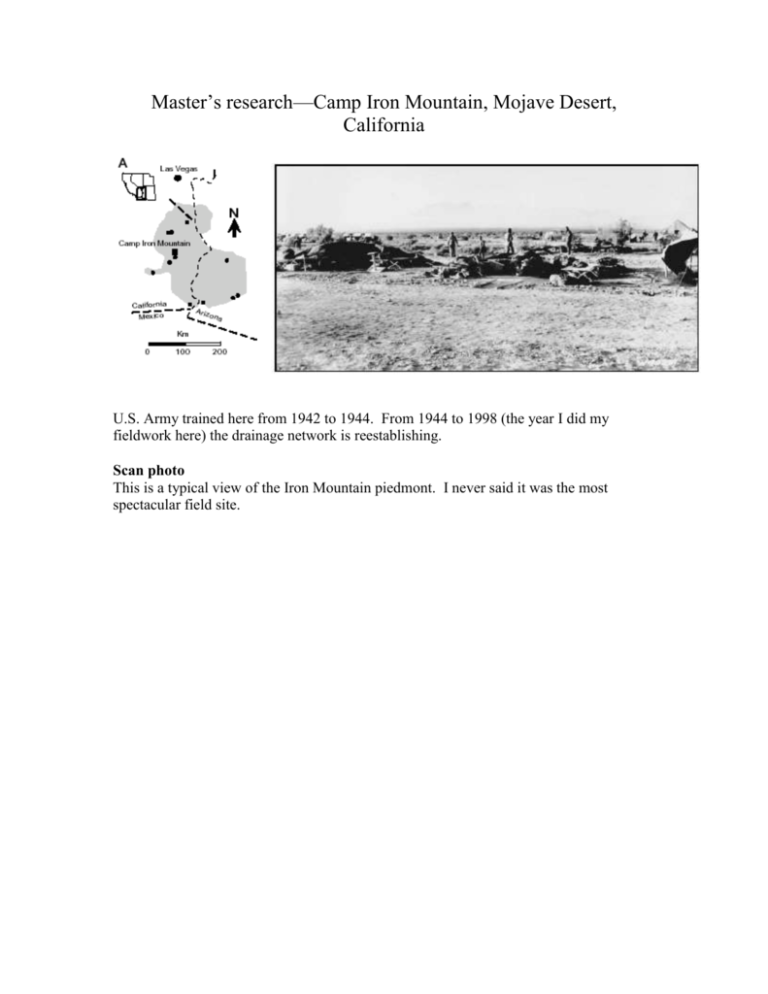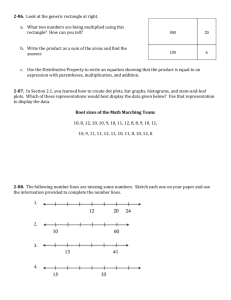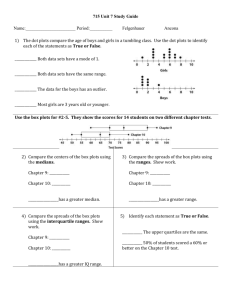Master`s research—Iron and Granite Mountain piedmonts, Mojave
advertisement

Master’s research—Camp Iron Mountain, Mojave Desert, California U.S. Army trained here from 1942 to 1944. From 1944 to 1998 (the year I did my fieldwork here) the drainage network is reestablishing. Scan photo This is a typical view of the Iron Mountain piedmont. I never said it was the most spectacular field site. I surveyed 6 plots (60 m by 60 m) in areas outside of the abandoned camp to determine “control” characteristics. I surveyed 6 plots inside the camp dominated by old walkways that were outlined by rocks (~10 cm high) to determine the affect of the walkways on the drainage network. I also surveyed 6 plots down gradient of road berms (~ 50 cm high) to determine the affect of the berms on the drainage network. RESULTS Channels in control plots are on average ~ 1 cm deeper than in walkway and road plots. Channels in control plots are on average ~ 1 m wider than channels in walkway and road plots. Distribution of channel widths and depths are noted above. Black bars represent the average values. Channels in walkway plots had orientations that are 20 degrees different than channels in either control or road plots. The difference in channel orientation is cause by the rock alignments that outline the walkways. Big gray arrow shows steepest gradient, circles represent frequency of 5 occurrences, and black bars represent data. Double barbed arrow in walkway plots represents walkway orientations. Tables of cross-sectional areas and drainage density for control, walkway, and road plots. Control plots have larger cross-sectional areas. Drainage densities for control and walkway plots are similar because many small channels form in walkways due to soil compaction decreasing infiltration rates. CONCLUSIONS The drainage network is still recovering to control conditions after 54 years. Berms are effective local drainage divides and channels down gradient of berms are small and narrow. Rock alignments control the direction of small channels. The lasting effects of Army training could have been reduced by removing the rock alignments and removing the berms. For a more detailed look at this research please click here to read our article in Reviews of Engineering Geology volume XIV.






